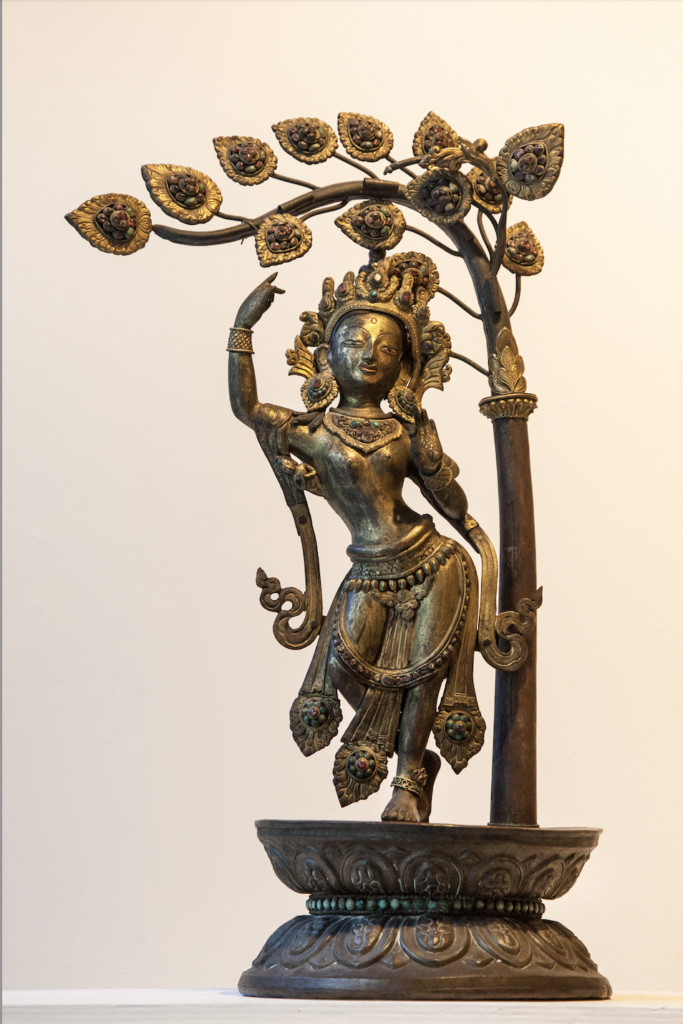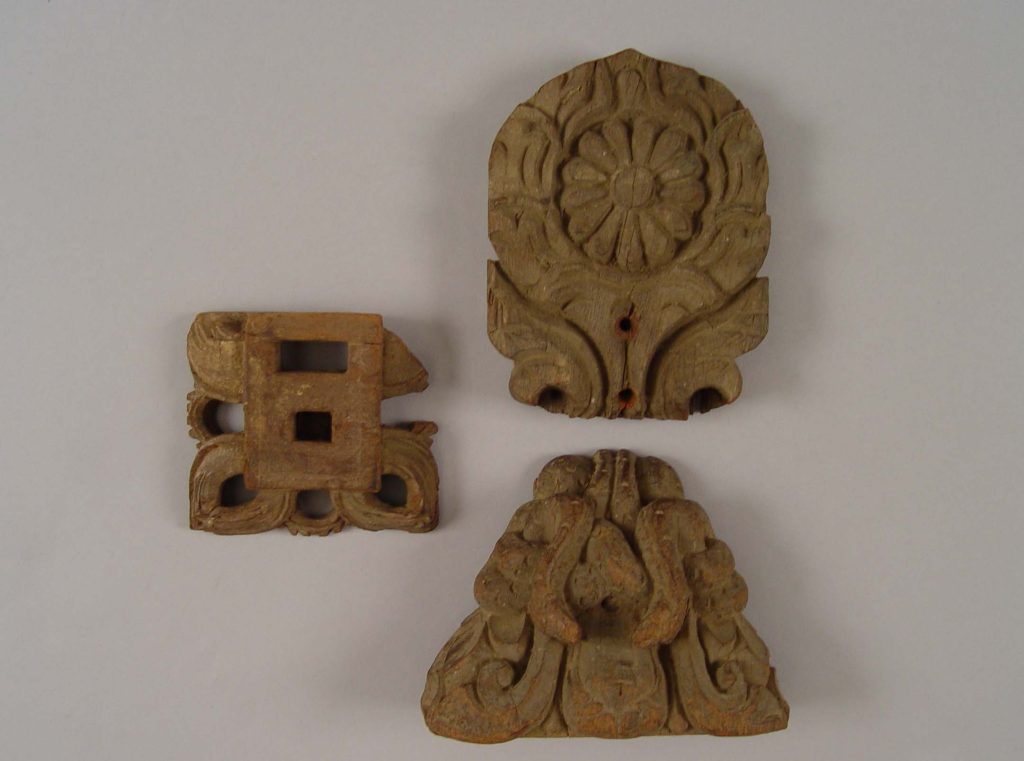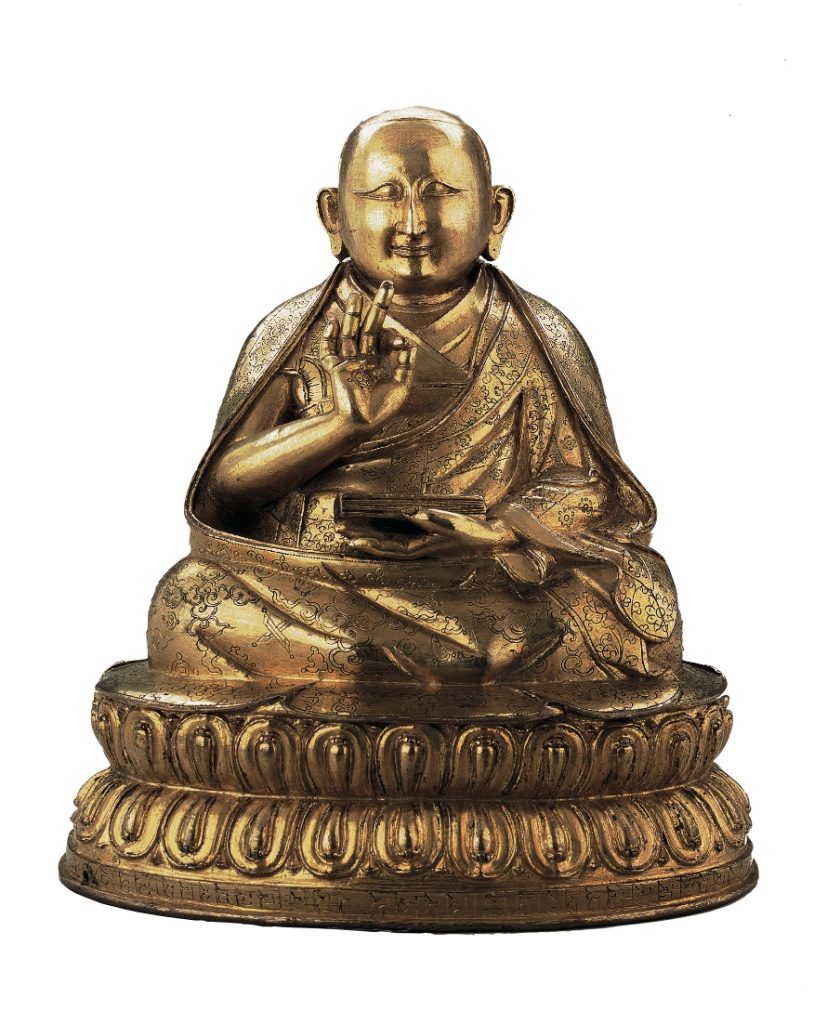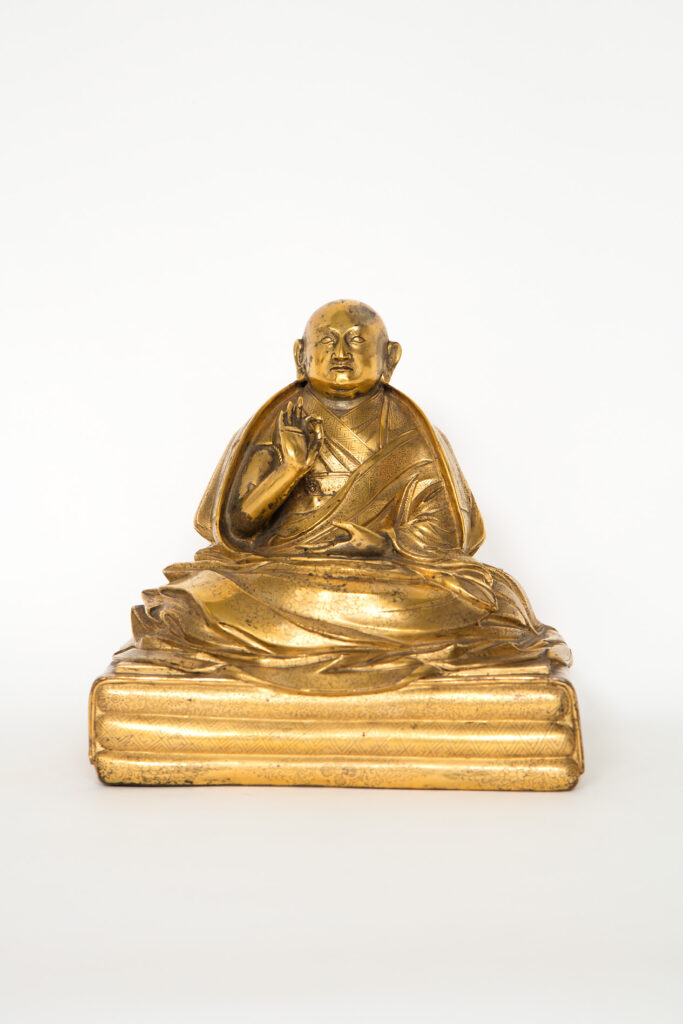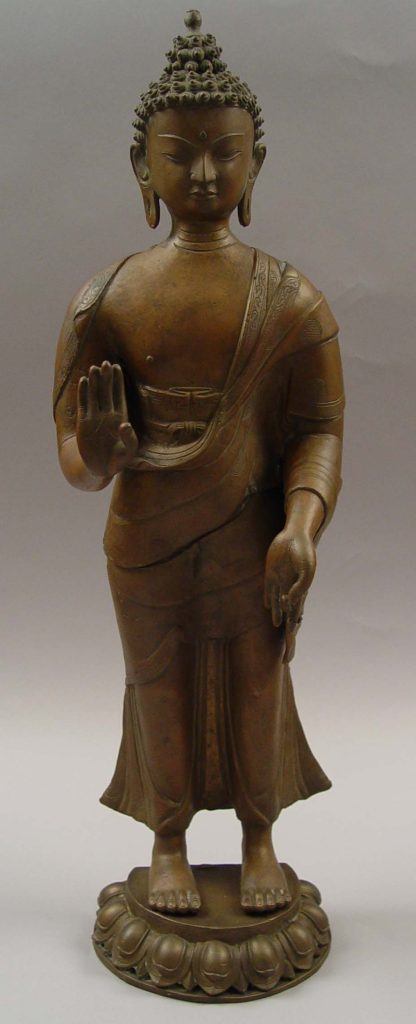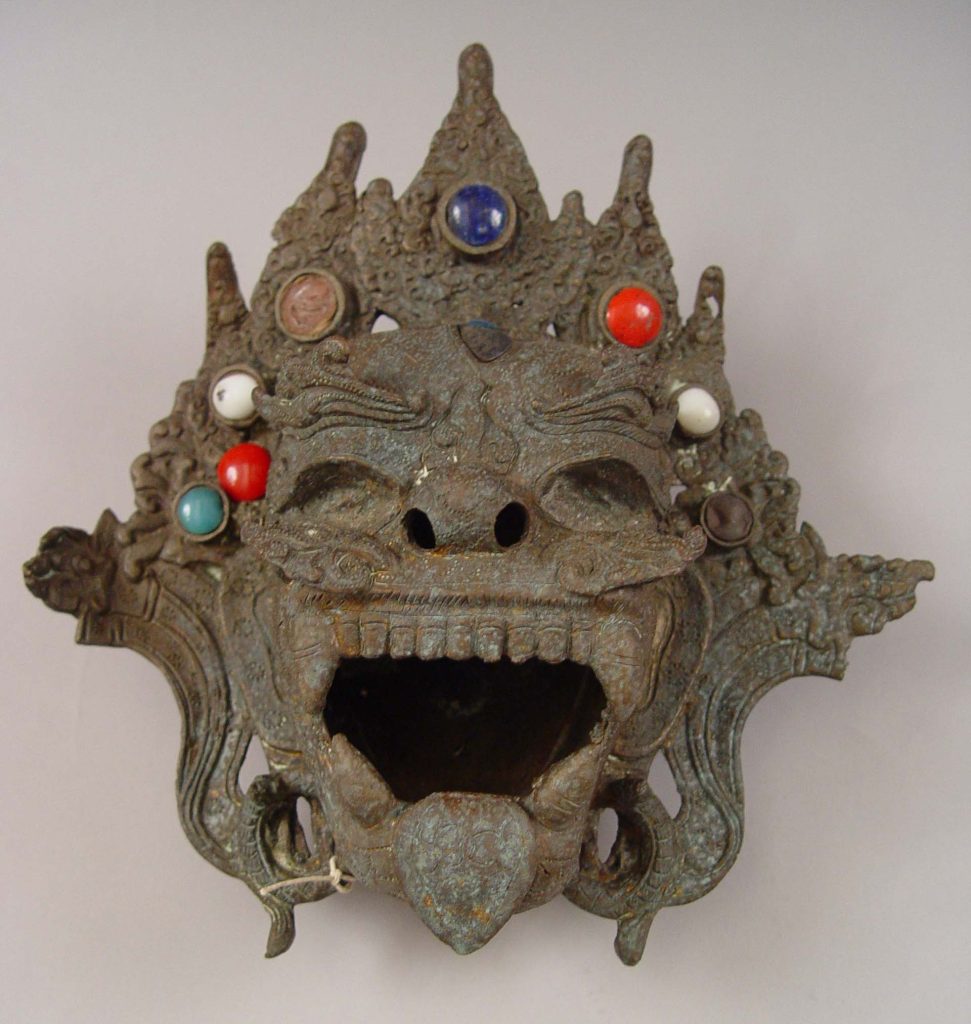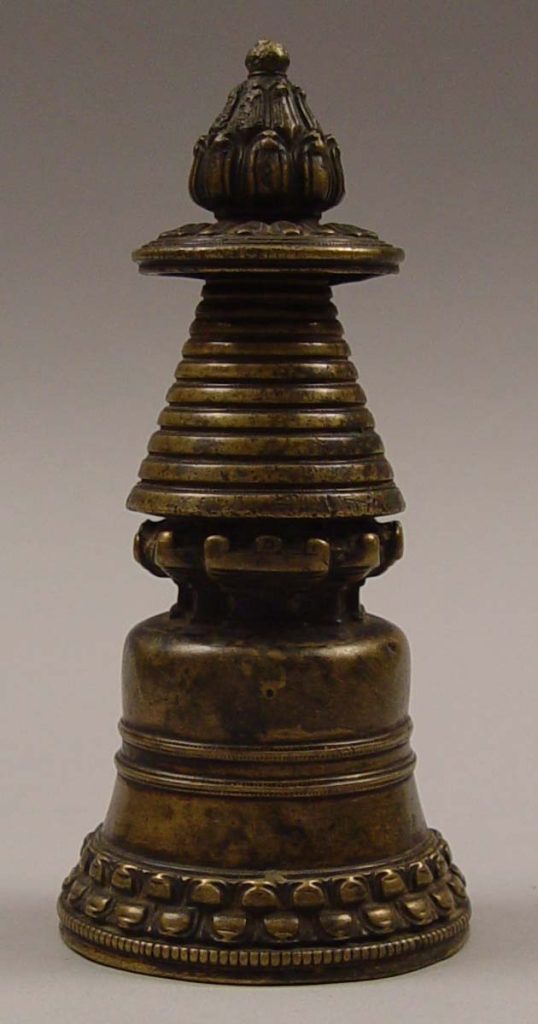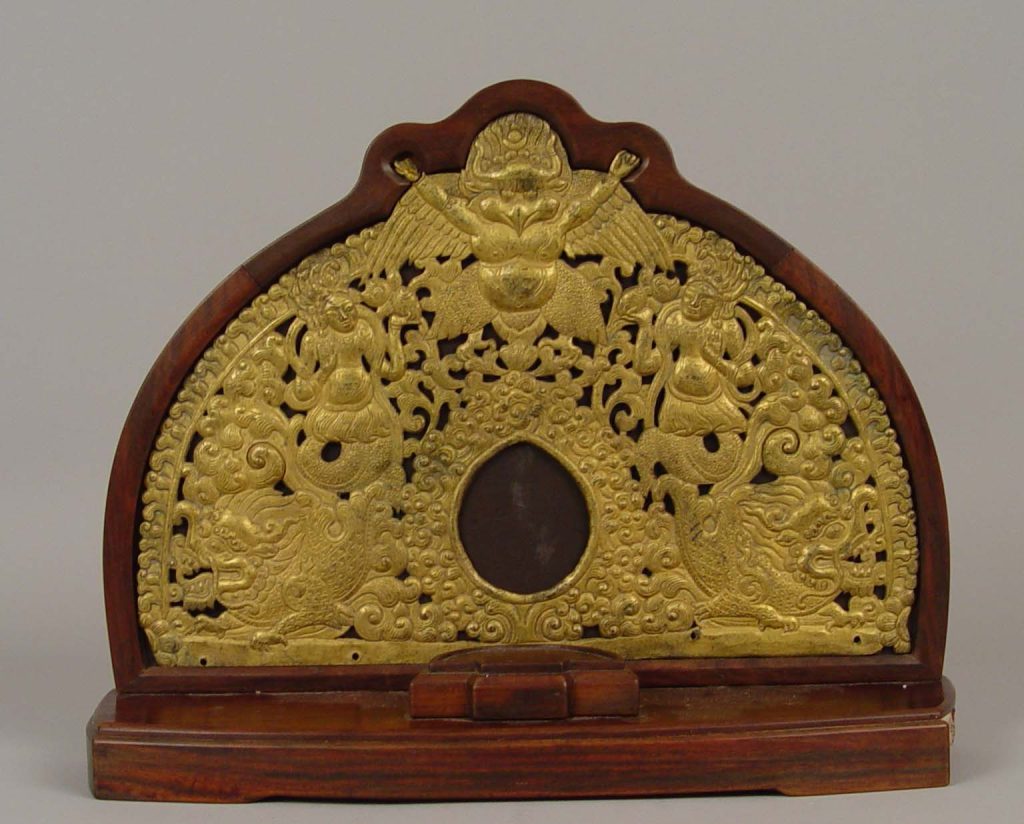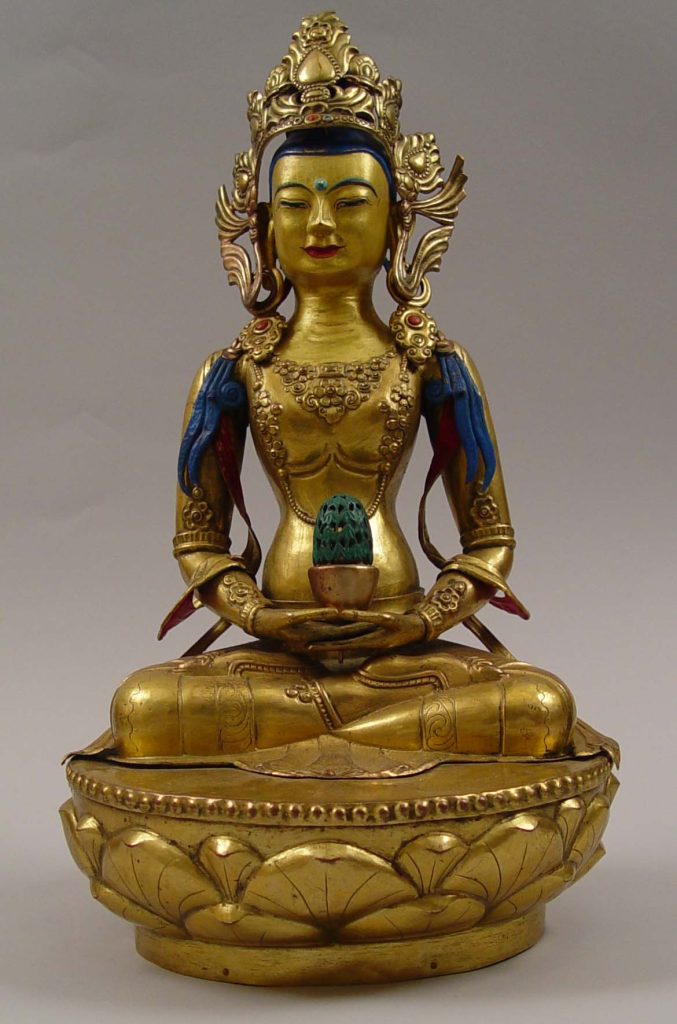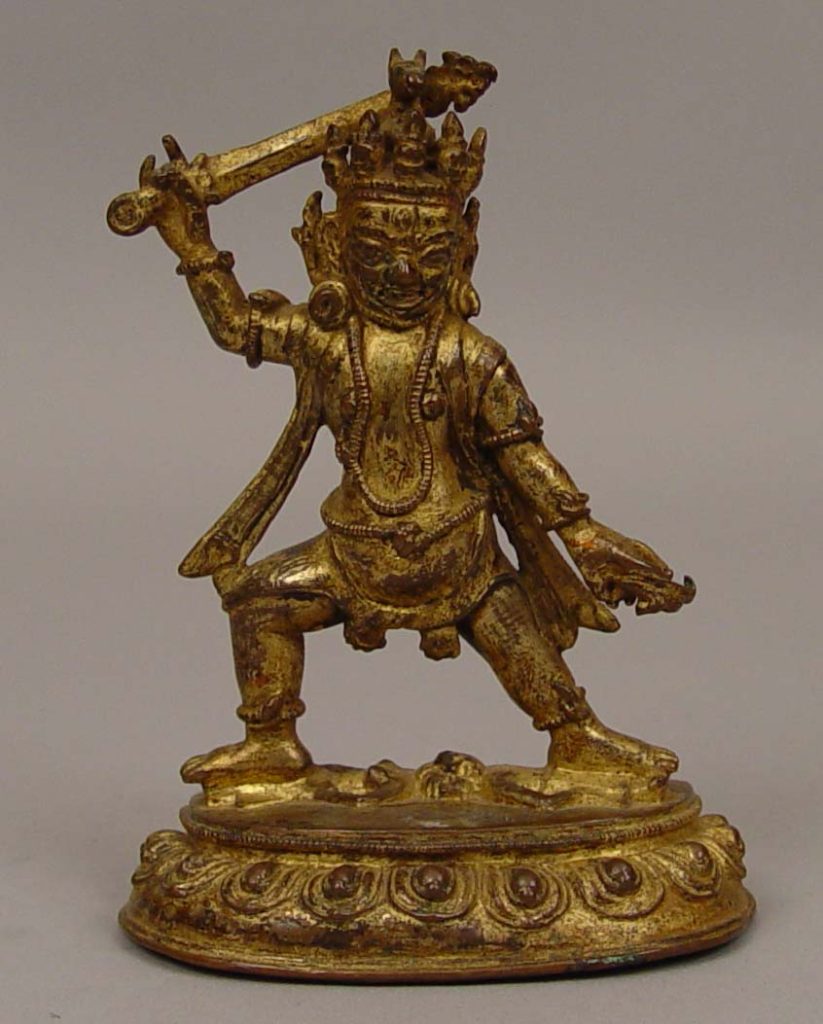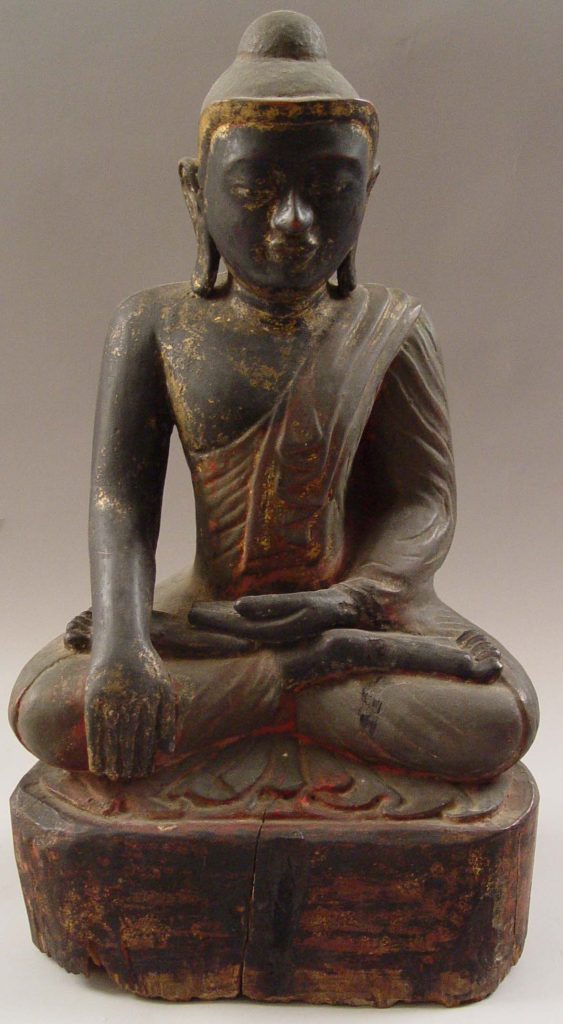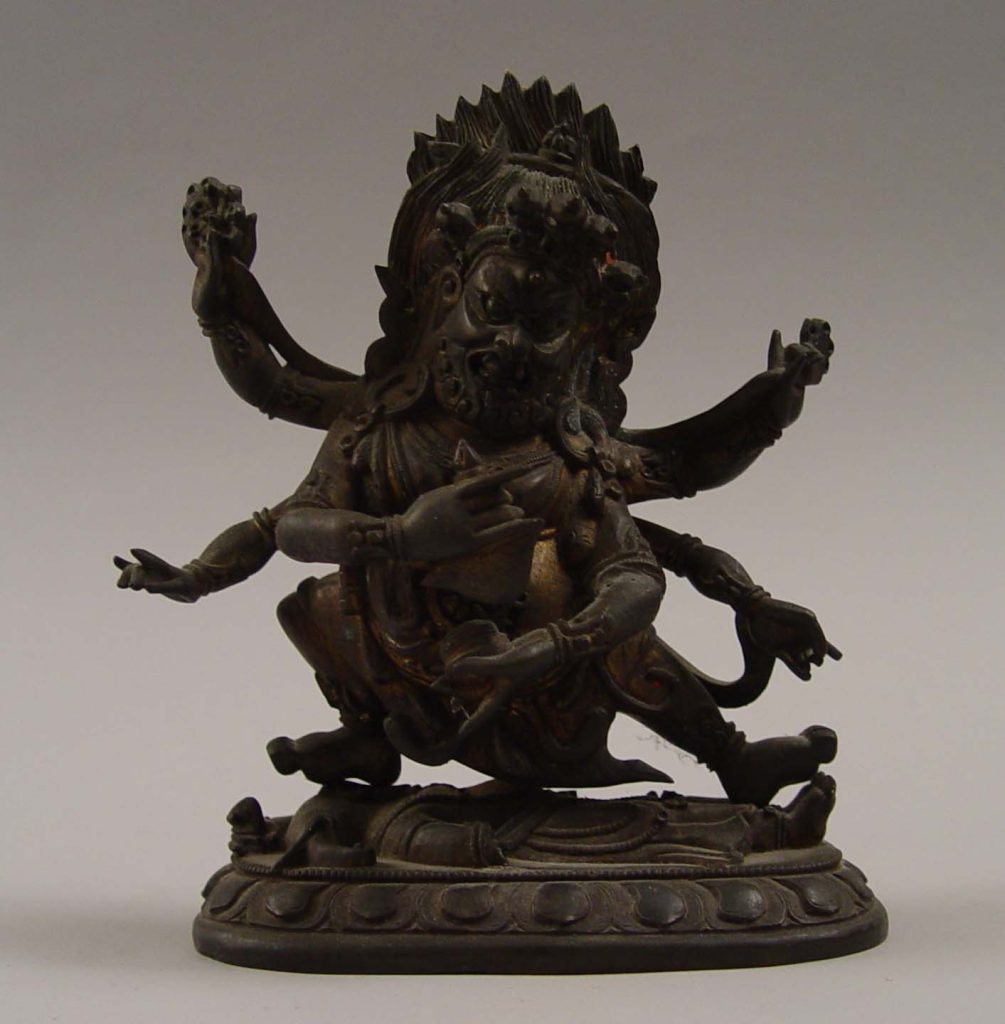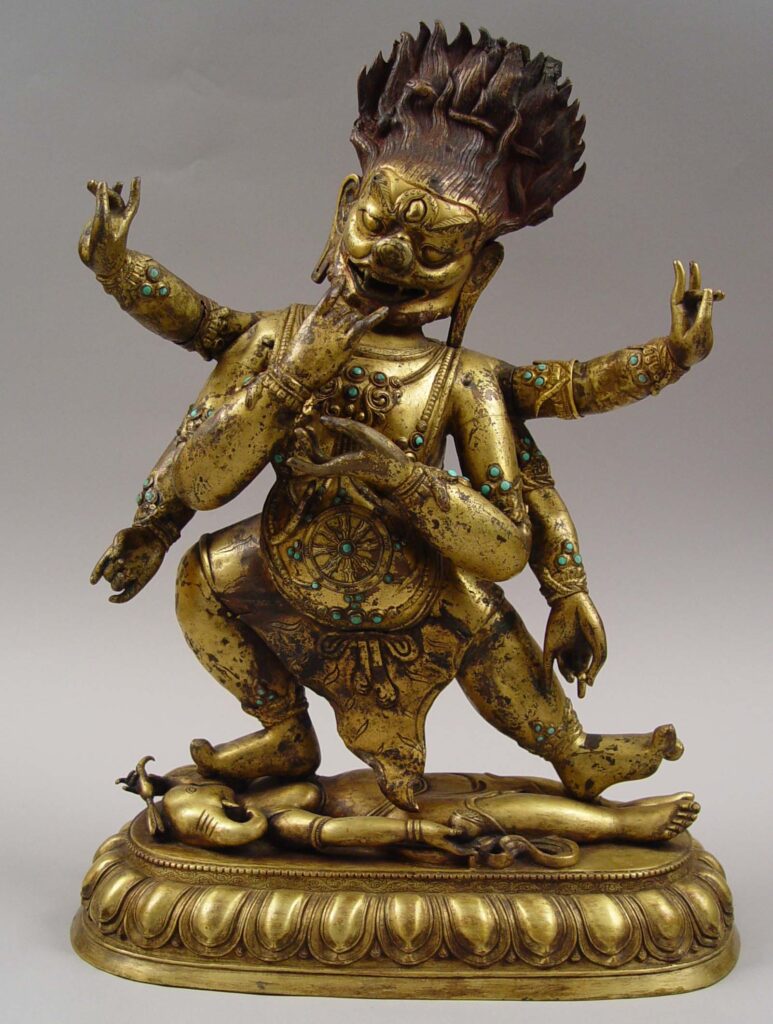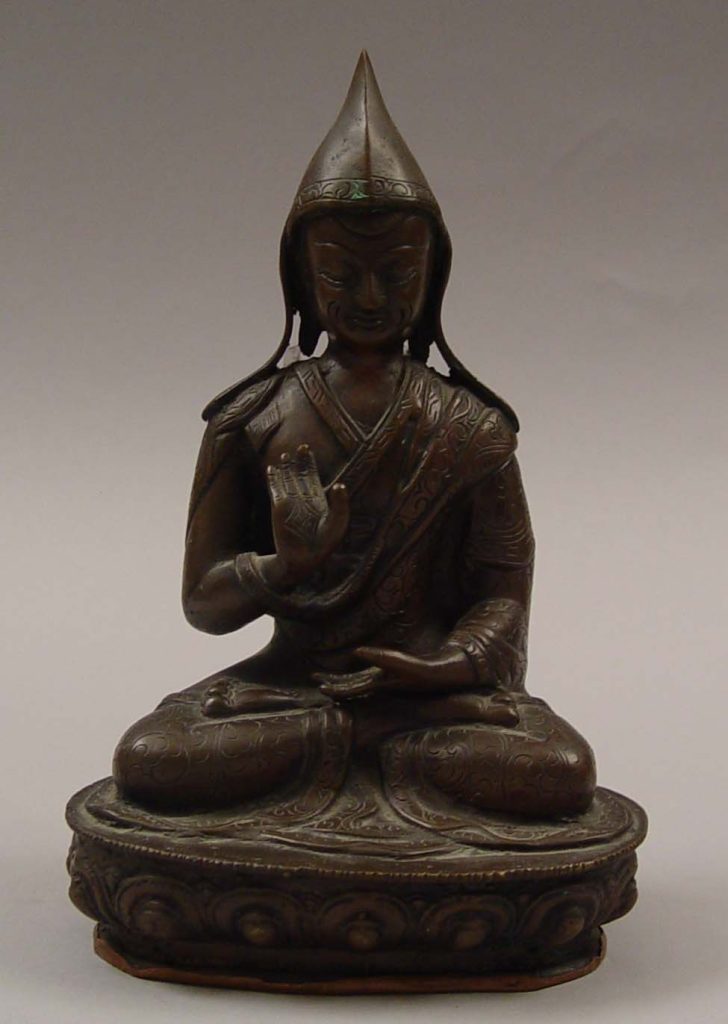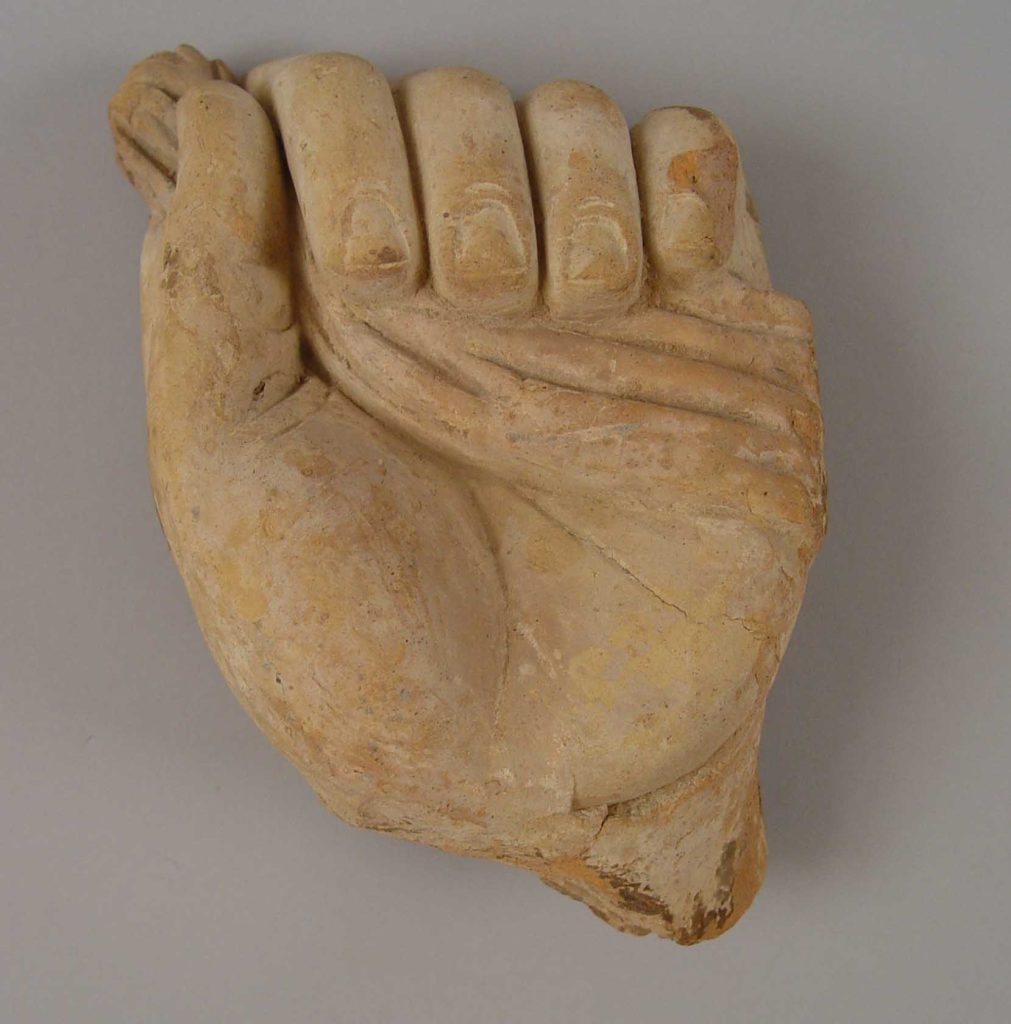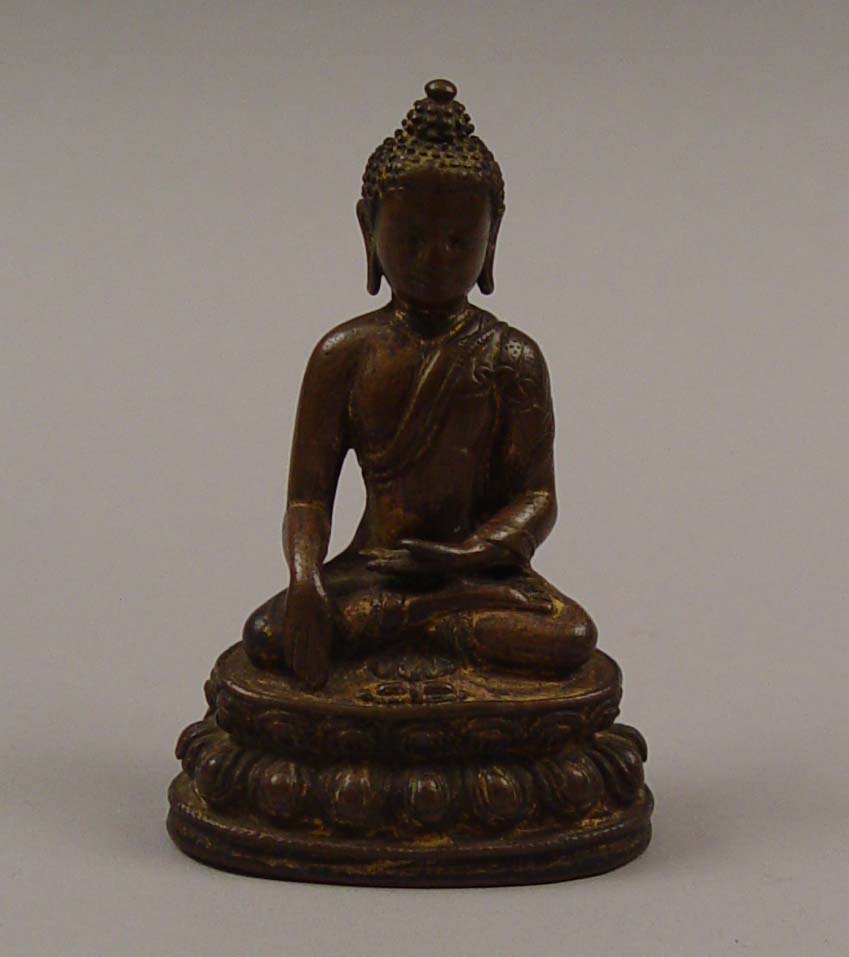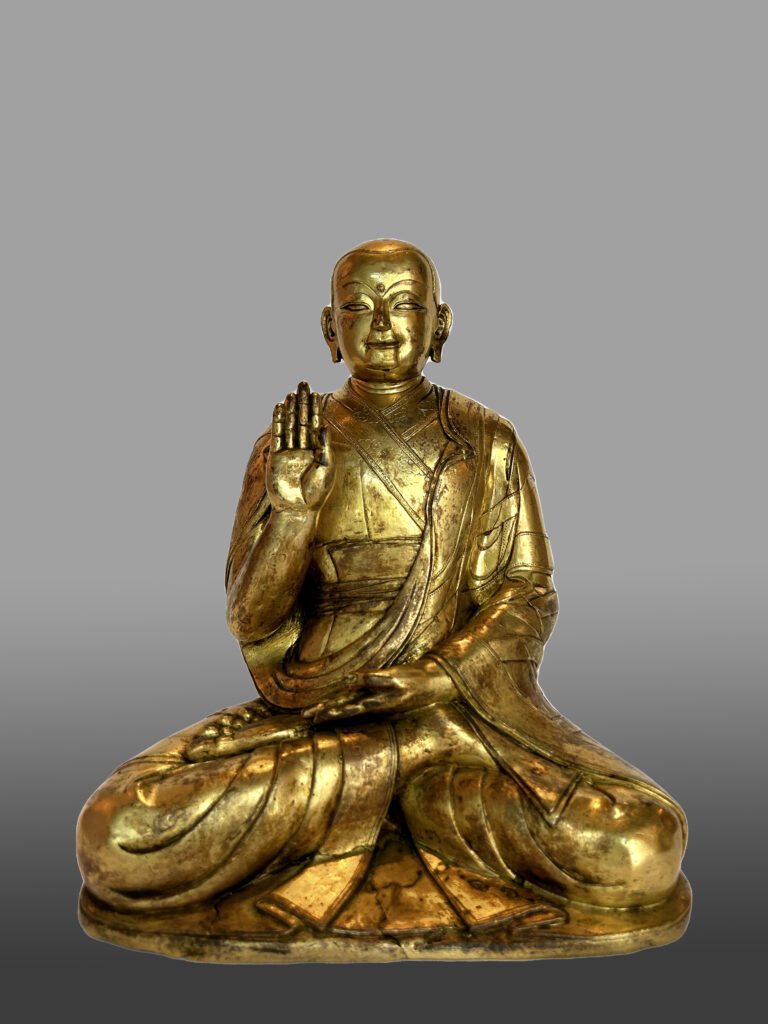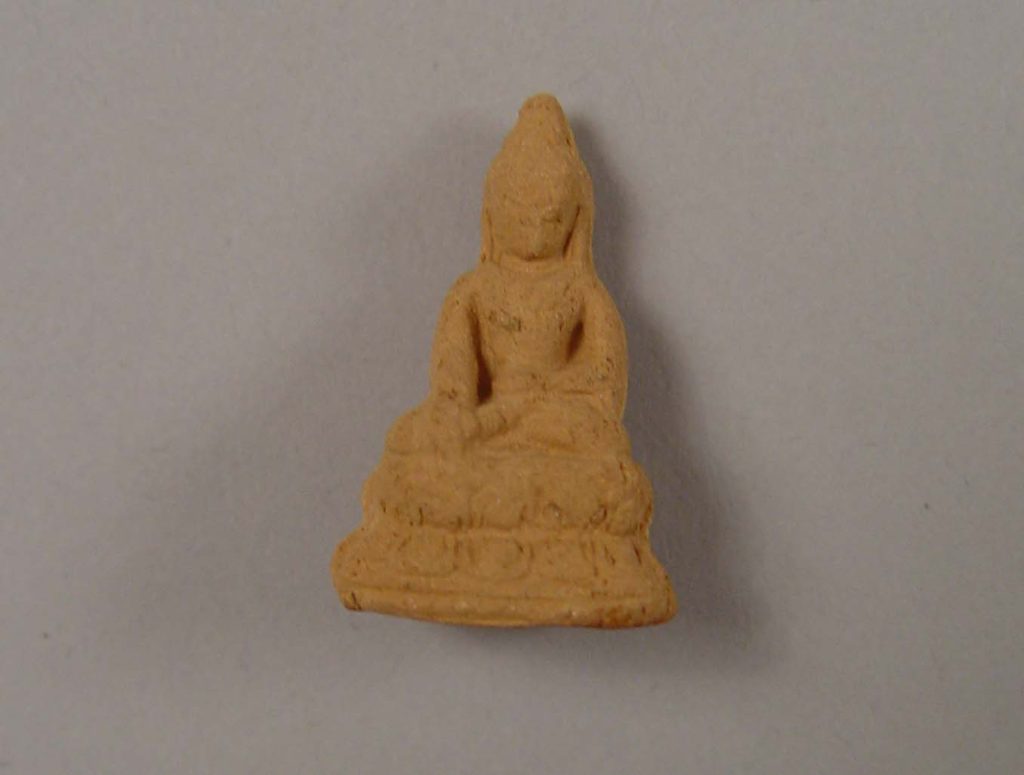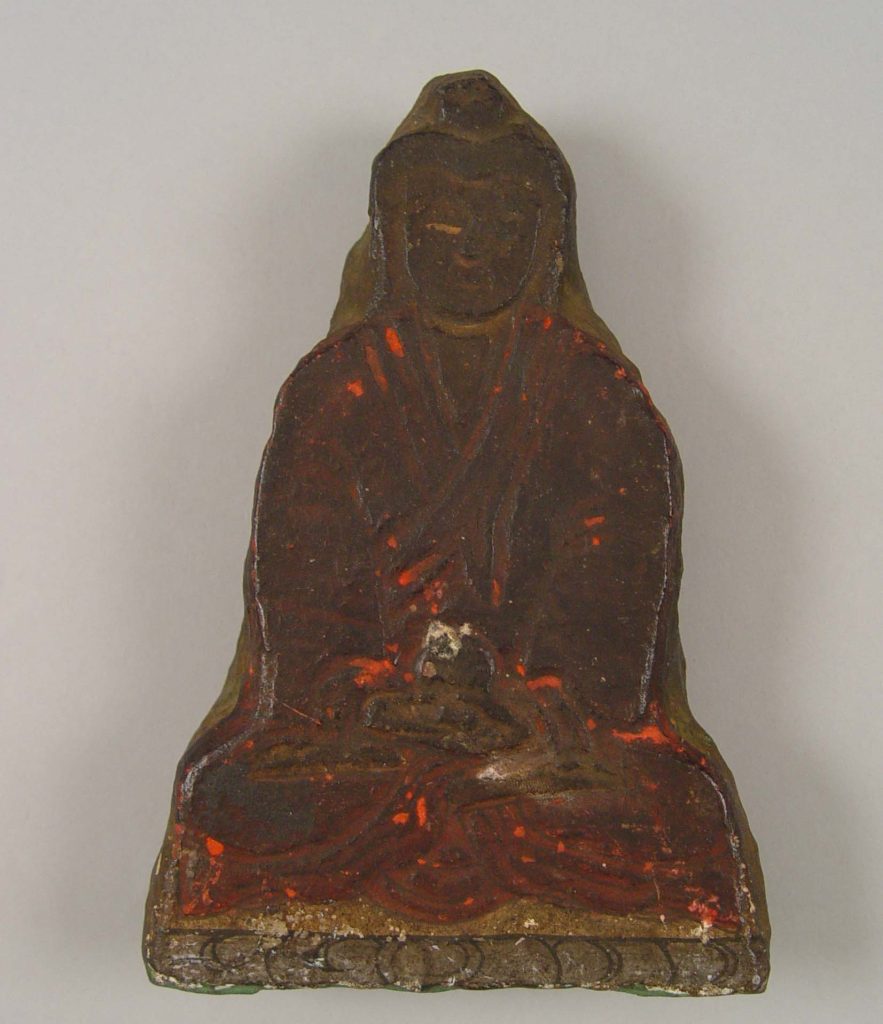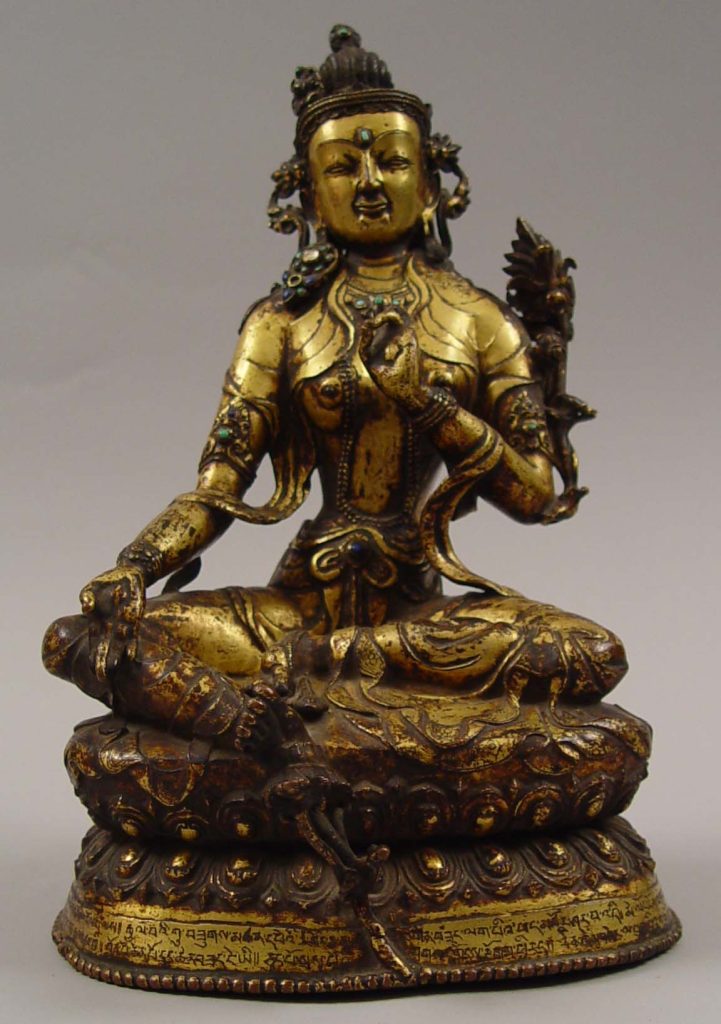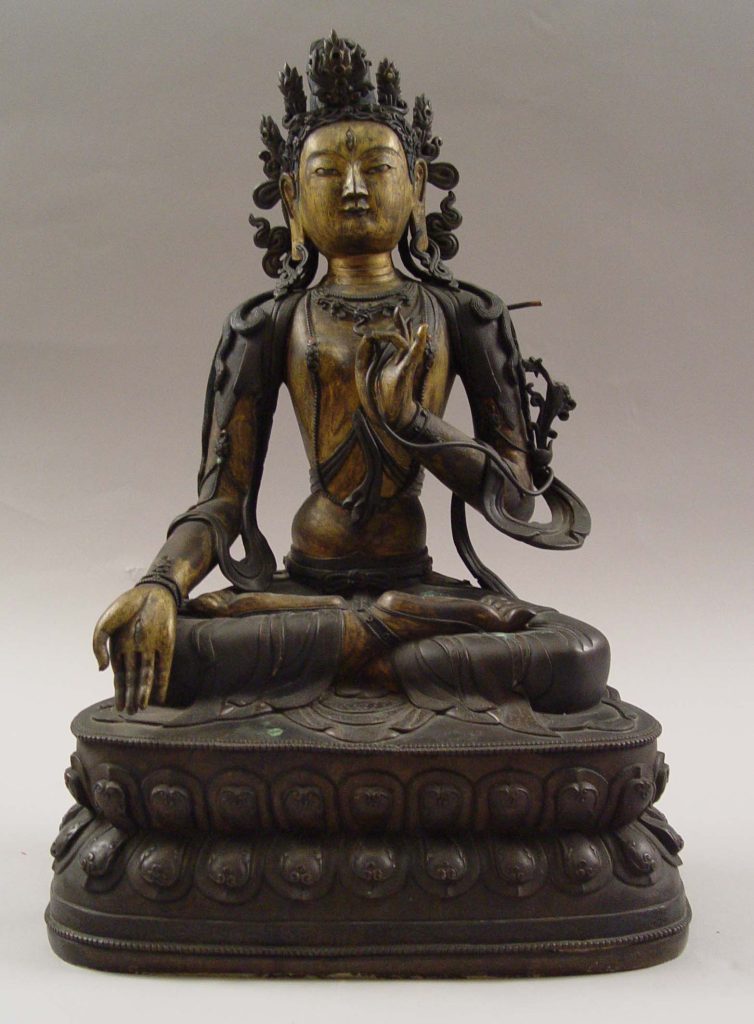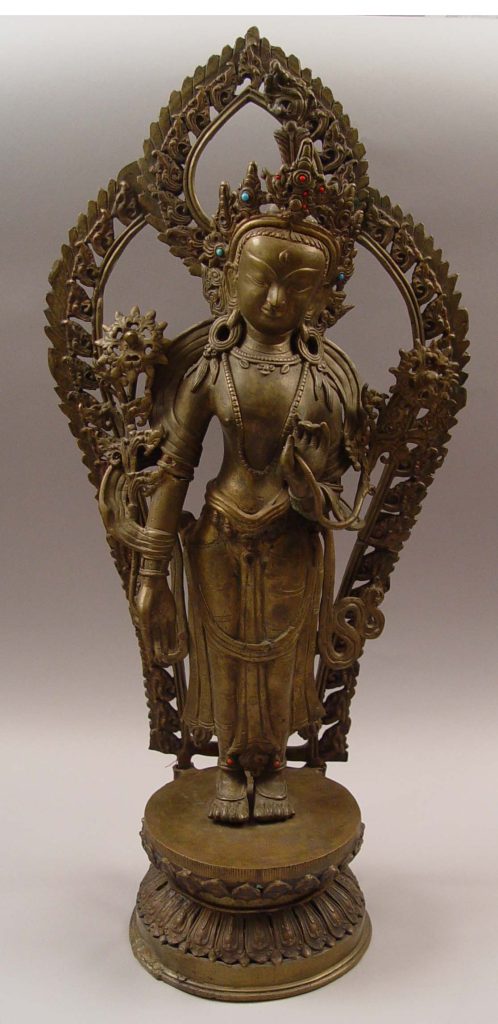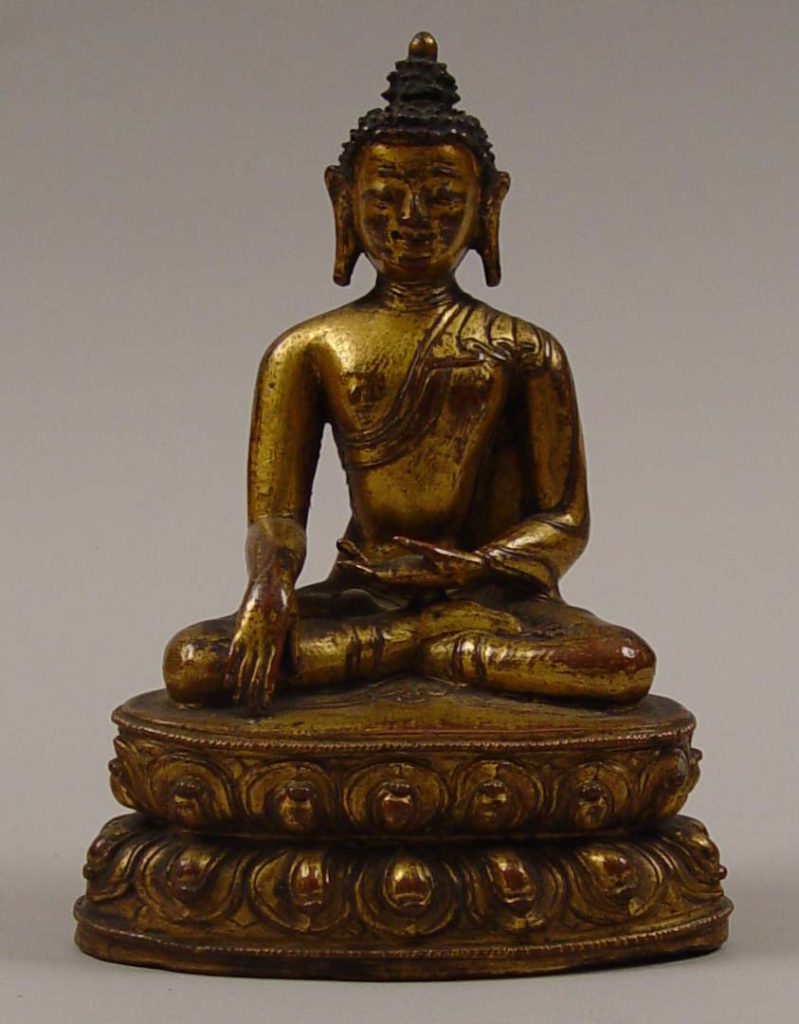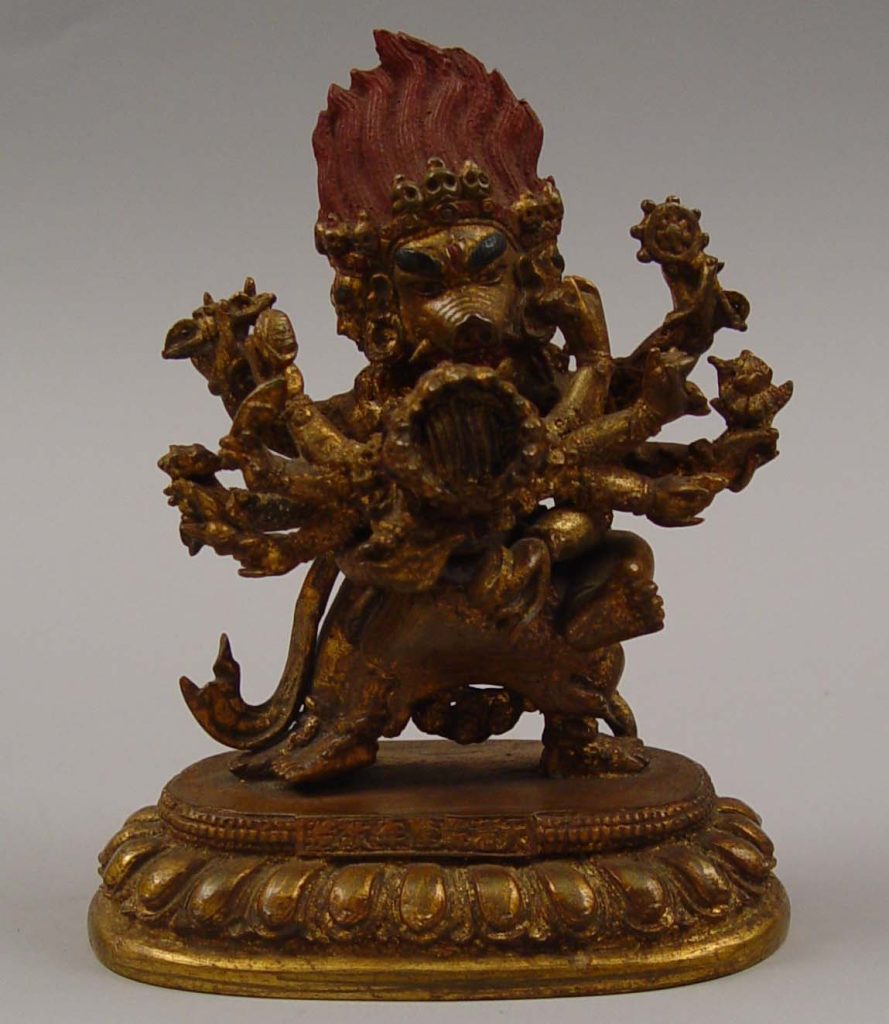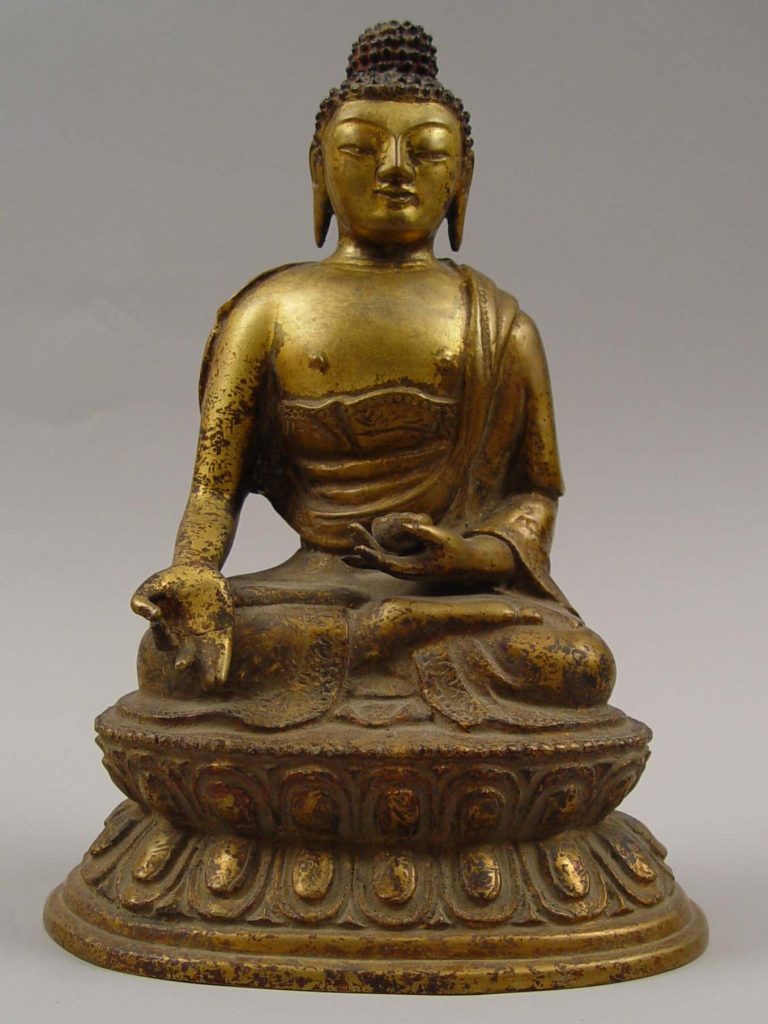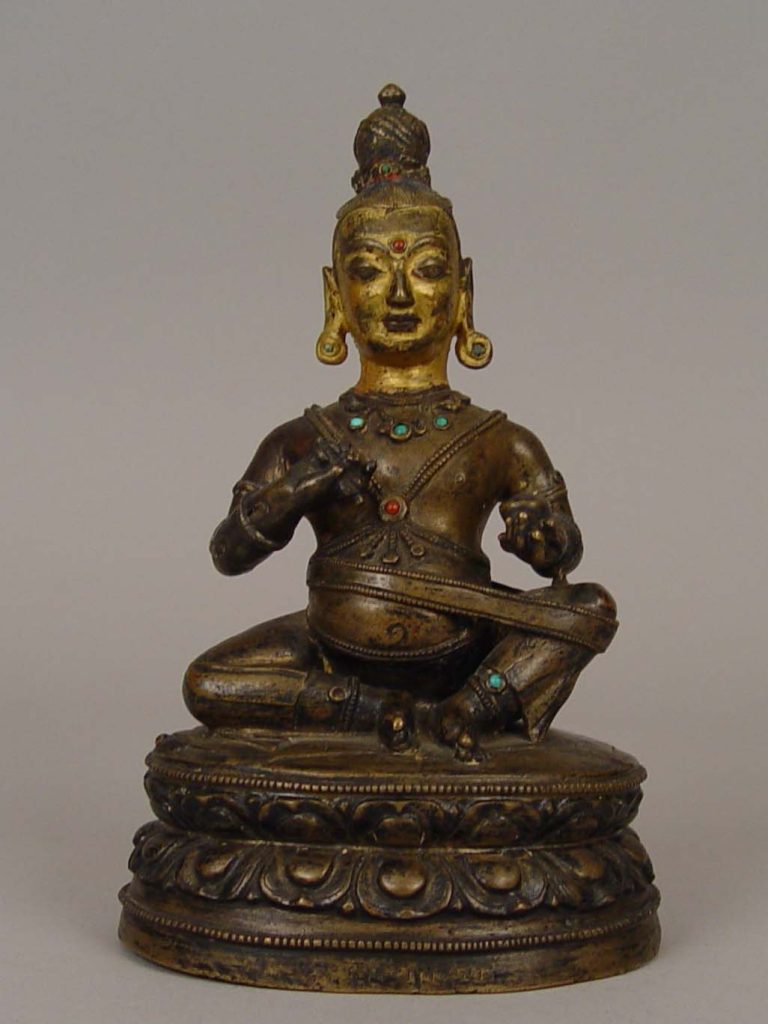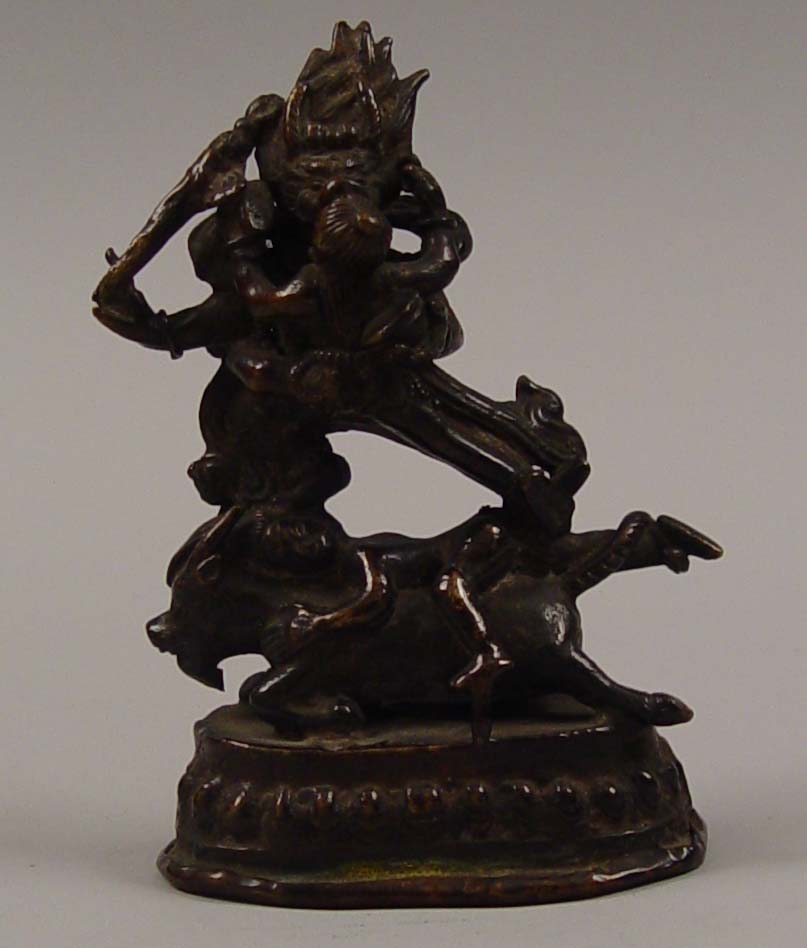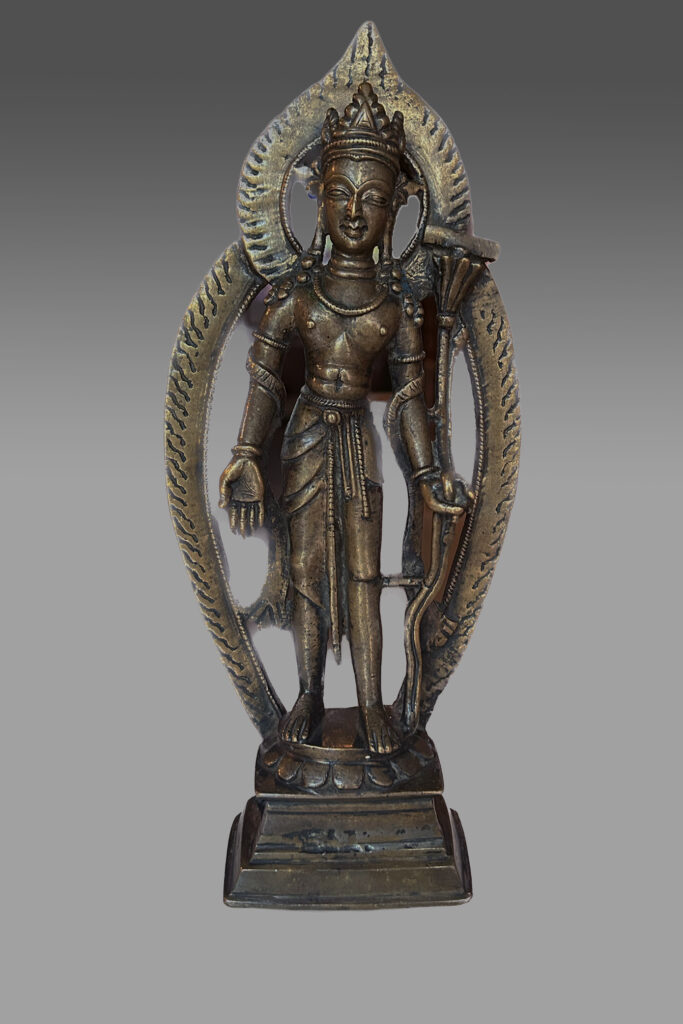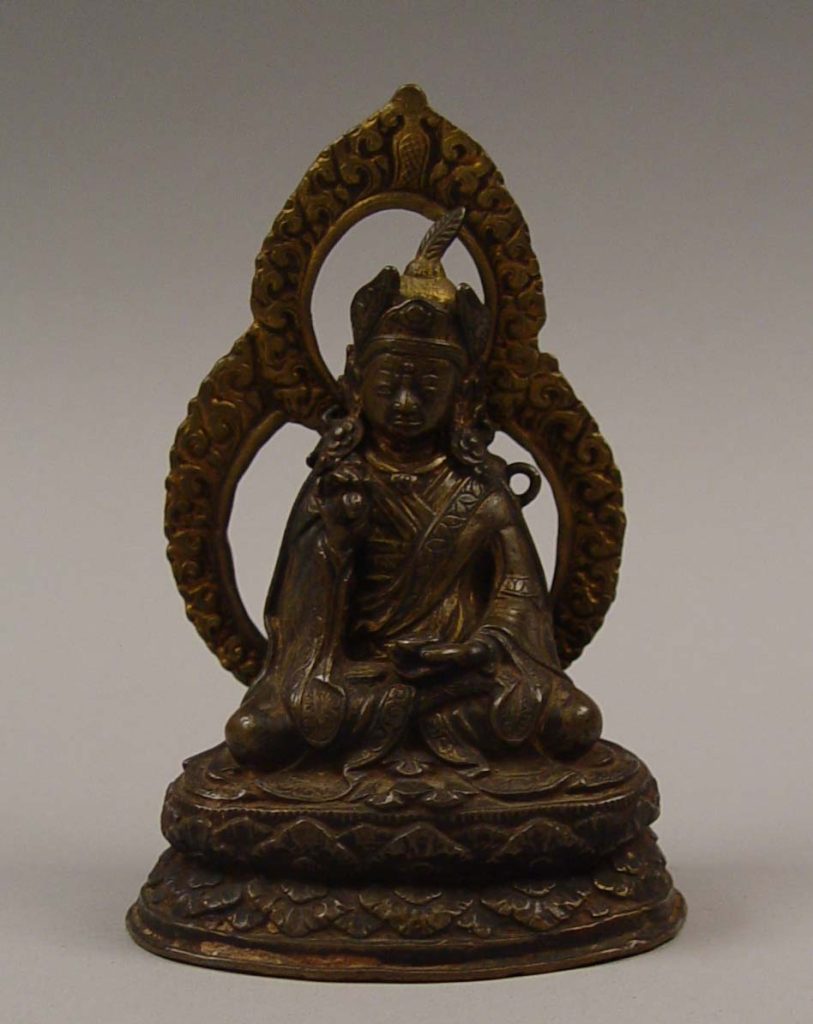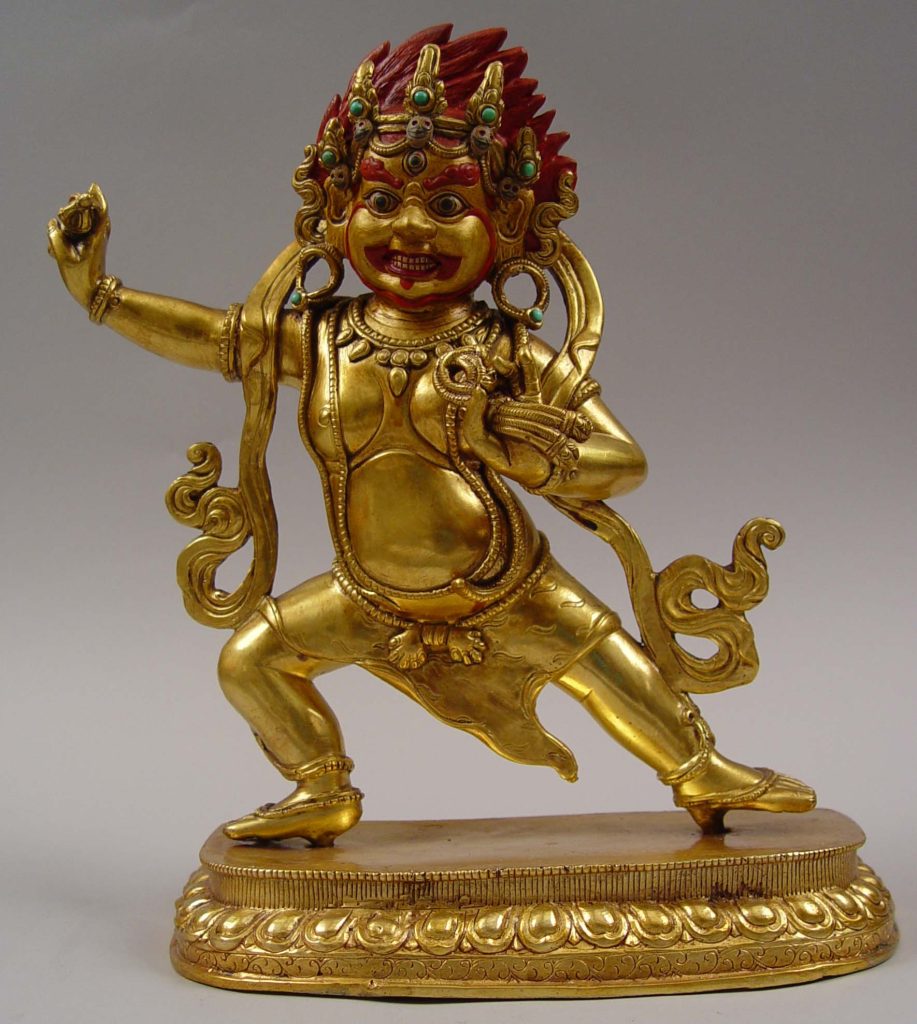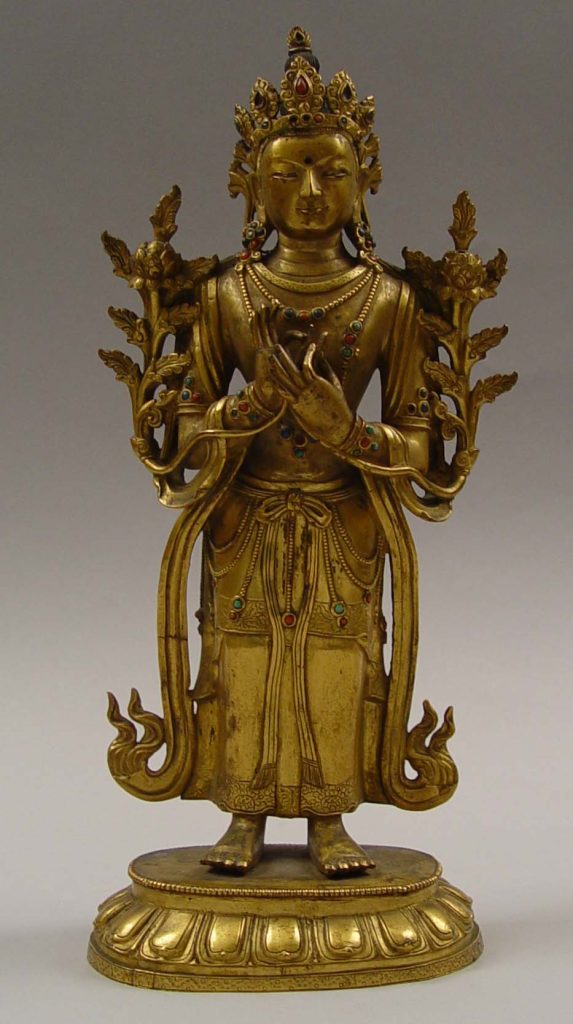Gilt statue of Shakayumi Buddha. Blue pigmented hair. Buddhism was founded in the 6th century BCE by Siddhartha of the Gautama clan, crown prince of the Shakya kingdom, in a region that today spans the India-Nepal border. After becoming a Buddha, an Enlightened One, he was known as the Sage of the Shakya. Shakayamuni Buddha was roughly contemporary with the pre-Socratics, Isaiah, Zoroaster, Confucius, and Lao-tzu. He grew up in a time when Eurasia was filled with bustling city-states. Kings were striving for empires, with devastating effects to the old rites and myths, while the growing population was becoming skeptical and alienated. Merchants were prospering, with new technologies of production and travel, and were feeling the need of new ethics and educational systems that would be more consonant with their new perspective. From Greece to China, philosophers arose to meet these needs, asking new questions and finding new answers. They sought to discover the nature of reality, the key to peace of mind, and the meaning of life. They were usually persecuted by kings, feared by priests, and, fortunately, appreciated by the ever practical merchants. The Tibetan sense of history has become completely intertwined with Buddhism during the last thirteen hundred years. Even with Tibetan cosmogonic myths originate in the Buddhist scriptures. Within the general Buddhist context of the beginninglessness of life, these myths teach that universes evolve and devolve in a cycle of eons (kalas). Tibetans believe we now are in the Excellent Eron of the Thousand Buddhas, during which one thousand Buddhas will appear in our world. Shakyamuni, our historical Buddha (563-481 BCE), is the fourth of these, and Maitreya Buddha, the Buddha of the future (around 100,000 CE), will be the fifth.
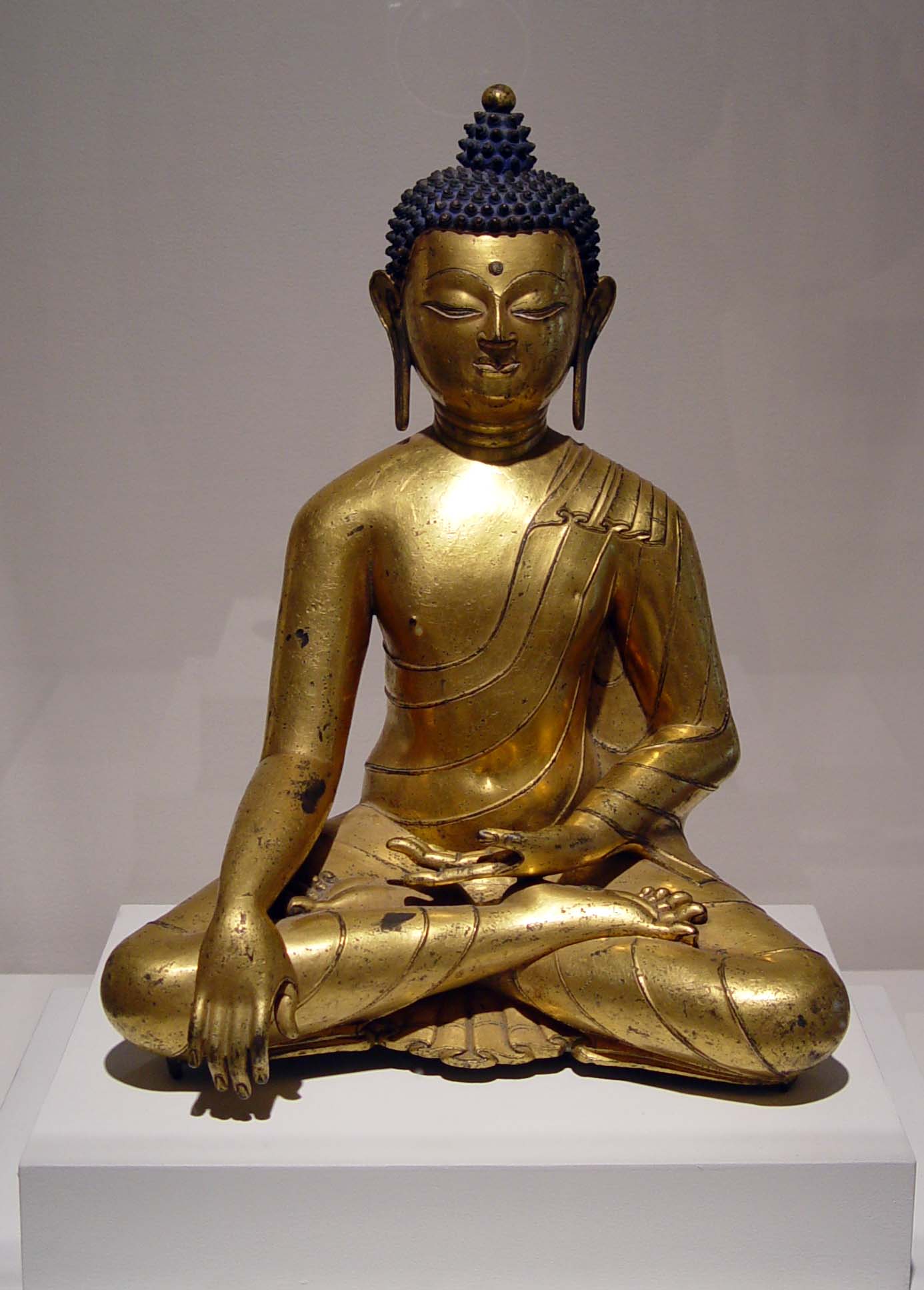
Shakyamuni Buddha
སངས་རྒྱས་ཤཱཀྱ་ཐུབ་པ།
14 1/2" x 6" x 10"Dimensions:
- Object / Type: Sculpture
- Century: 15th Century
- Orgin: Tibet

